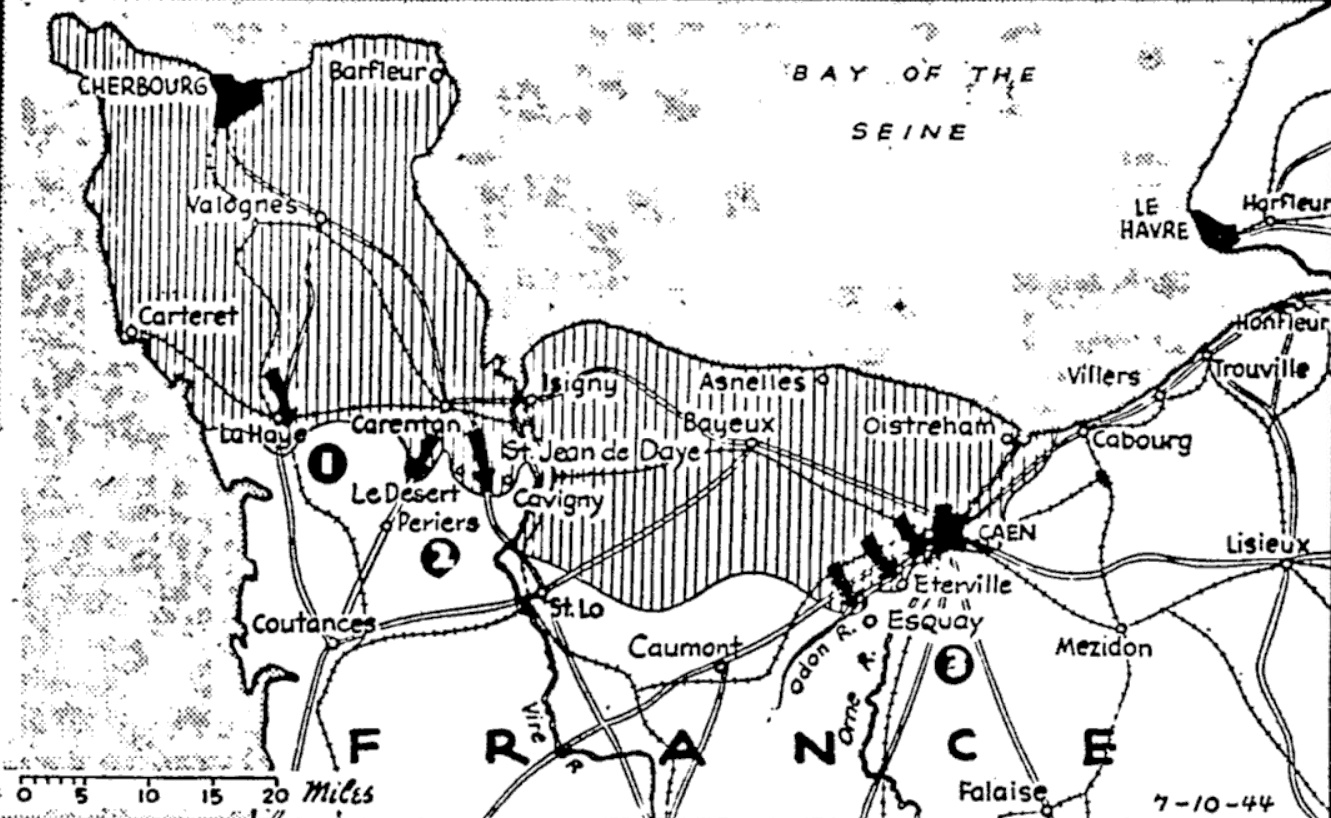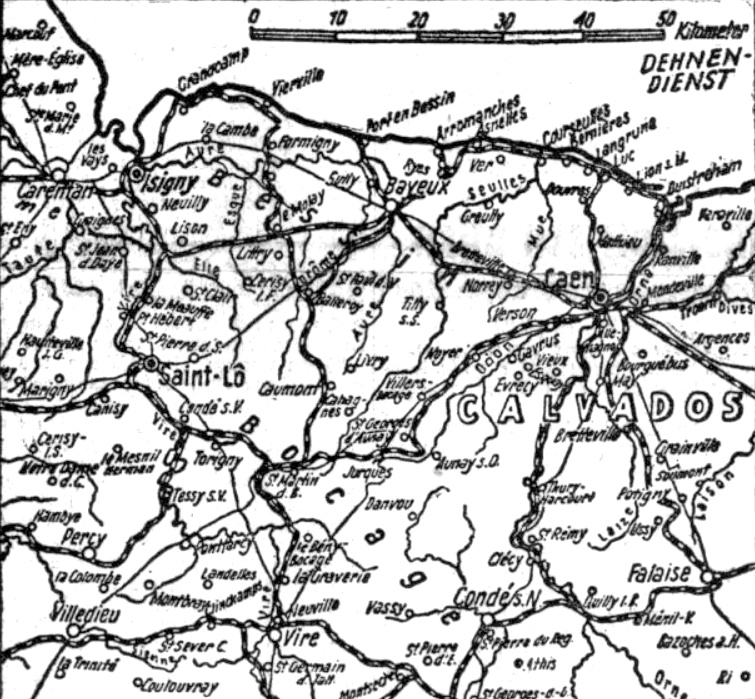4,000 planes batter Nazis around Caen
1,000 hit oil plants in Austria, Hungary
By Walter Cronkite, United Press staff writer
SHAEF, London, England –
More than 4,000 Allied planes roared over the flaming Norman battlefields yesterday and laid a shattering barrage across the German frontlines around Caen, while a mighty sky fleet of well over 1,000 Italian-based raiders bombed Nazi oil refineries and airfields in Austria and Hungary.
Headquarters announced that the overall number of sorties would total more than 4,000, including 1,200 flown from Normandy airfields in close support of U.S. and British ground attacks.
Wireless station set afire
Headquarters announced that Normandy-based fighters shot down two German planes against a loss of one. Meanwhile, Spitfires of the air defenses of Great Britain set fire to a wireless station at Combourg, 20 miles southeast of Saint-Malo, and strafed various targets from Brittany to Laon.
Wave upon wave of U.S. Marauders thundered over the heads of the charging British troops throughout the morning, splattering their bombloads upon enemy gun batteries and strongpoints in the Caen sector, many of which were still smoldering from a savage, 2,500-ton night bombardment by the RAF’s heavyweights.
Thunderbolt fighters covered the Marauders and raked the enemy lines with machine-gun and cannon fire. Nearly 100 Thunderbolt fighter-bombers, attacking from treetop height walked their bombs across German defenses. Not a single German plane attempted to interfere with the raid, and the Nazis threw up only a feeble anti-aircraft barrage that caught one Marauder.
Smash rail bridge
Simultaneously, other Marauder formations reached inland to smash a railway bridge across the Eure River at Nogent-le-Roi, 70 miles southwest of Paris, and another across the Loire at Saumur.
At midafternoon, another force of thunderbolts and Lightnings bombed the network of railway lines feeding into the battle area, hitting 40 points between La Chapelle and Combourg, between Craon and Laval, and in the neighborhood of Rennes and Alençon.
The Nazi robot bomb bases along the Pas-de-Calais area were attacked by medium-sized forces of U.S. 8th Air Force Liberators and Flying Fortresses.
Swarms of U.S. fighters covered the four-engined giants and, meeting no enemy opposition in the air, they fanned out over northern France to bomb and strafe targets of opportunity on the ground.
Wreck 20 planes
One Mustang formation commanded by Col. William J. “Wild Bill” Cummings Jr. of Lawrence, Kansas, and led today by Maj. Henry B. Kucheman Jr. of Richmond, Virginia, flushed a secret German airdrome in a forest southeast of Paris. Twenty enemy planes were destroyed on the ground at Dreux Airfield, south of Paris. Another Lightning fighter group shot up 11 locomotives, 50 freight cars and a flak tower, all without meeting a single enemy fighter. German anti-aircraft gunners, however, shot down 10 heavy bombers and one fighter.
Between 500 and 750 Flying Fortresses and Liberators, accompanied by probably as many fighters, swarmed up from their Italian bases to join in the assault on Axis Europe, blasting three oil refineries and three airfields in the Vienna area and another airdrome at Veszprém, 65 miles southwest of Budapest.
Returning crewmen said only weak enemy fighter opposition was encountered over Vienna, where the bombers touched off huge fires and explosions in the Floridsdorf Creditul Minier and Fanto Vösendorf refineries. The Floridsdorf refinery, in the northern suburbs of Vienna, is Austria’s largest crude oil distillation plant.
Blast airfields
Widespread damage was also inflicted on the nearby Zwölfaxing Markersdorf and Münchendorf airfields, all fighter bases covering Vienna, and on the Hungarian field.
The RAF was out in force last night, hurling 450 four-engined Lancasters and Halifaxes into a 2,500-ton raid on the German battlelines at Caen, while other raiding formations hit enemy communications lines in northern France and a force of Mosquito borders stabbed at Berlin. Other warplanes ranged over in France, Belgium and Holland on intruder patrols, shooting down at least nine enemy planes.
Thirty-three British planes were lost in the night operations.

